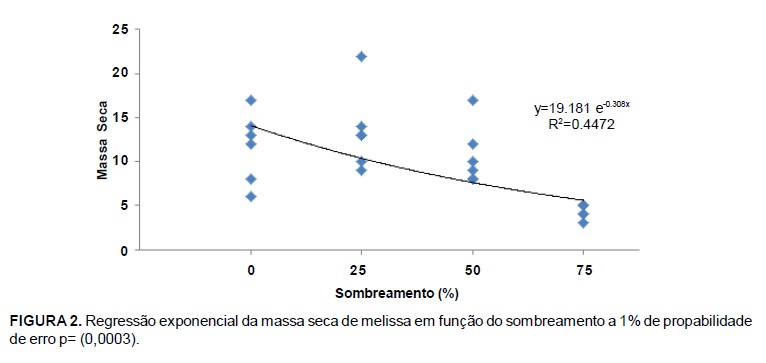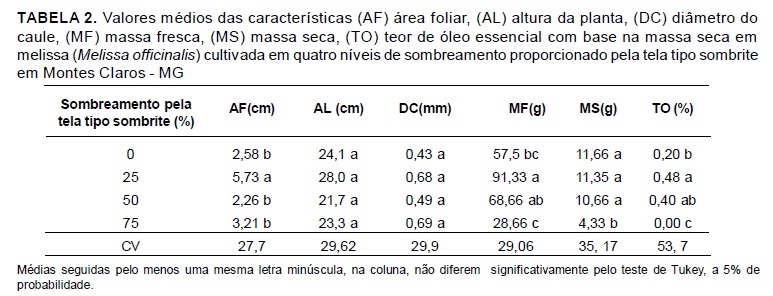The aim of this study was to evaluate the variation in essential oil content, growth and biomass production of Melissa officinalis L. cultivated under different shading levels. Experimental design was completely randomized (CRD) with four levels of photosynthetically active radiation (PAR), full light (control) and progressive shading with shade net (shading of 75, 50 and 25%) and six replicates. The following parameters were assessed: stem diameter, plant height, fresh mass and dry mass of shoot, essential oil content, essential oil yield and leaf area. Data were subjected to analysis of variance and regression analysis at 1 and 5% error probability. The characteristics stem diameter and plant height did not show significant differences among treatments. Production of fresh weight, dry mass and essential oil content was similar among all treatments, except for full light, where (FW): 25%=50%, 91.33 g and 68.66 g; (DW): 25%=0%=50%, 11.35, 11.66, 10.66 g and 4.33 g and OC: 25%=50%, 0.48 and 0.40% respectively. The treatment that resulted in the lowest productivity was 75% shading. Thus, in the north of Minas Gerais State, Brazil, from February to June, lemon balm can be cultivated under conditions of up to 50% shading, favoring the production of dry mass, fresh mass and essential oil content; these variables are of commercial interest for producers of medicinal and aromatic plants.
medicinal plant; secondary metabolite; production; light intensity




